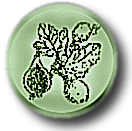Subsystem: Copper homeostasis
This subsystem's description is:
Copper is an important element in cell physiology. It is a part of prosthetic centers of oxidases and cytochrome biogenesis proteins. High concentration of copper can be however harmful and accurate balance of copper is a part of natural cell homeostasis. Different functions related to copper homeostasis are comprising this SS.
For more information, please check out the description and the additional notes tabs, below
| Diagram | Functional Roles | Subsystem Spreadsheet | Description | Additional Notes | |||||||||
Oops! We thought there was a diagram here, but we can't find it. Sorry
Copper is an important element in cell physiology. It is a part of prosthetic centers of oxidases and cytochrome biogenesis proteins. High concentration of copper can be however harmful and accurate balance of copper is a part of natural cell homeostasis. Different functions related to copper homeostasis are comprising this SS. In several organisms ,like: Oceanicola batsensis HTCC2597 [B],Roseobacter sp. MED193 [B]a nd other with variant code 40*, copper oxidases are coupled to cytochrome c biogenesis operon. There occured to be an interesting explanation to it (see an abstact below): Appl Environ Microbiol. 1998 Oct;64(10):3556-62. The cytochrome c maturation operon is involved in manganese oxidation in Pseudomonas putida GB-1. de Vrind JP, Brouwers GJ, Corstjens PL, den Dulk J, de Vrind-de Jong EW. A Pseudomonas putida strain, strain GB-1, oxidizes Mn2+ to Mn oxide in the early stationary growth phase. It also secretes a siderophore (identified as pyoverdine) when it is subjected to iron limitation. After transposon (Tn5) mutagenesis several classes of mutants with differences in Mn2+ oxidation and/or secretion of the Mn2+-oxidizing activity were identified. Preliminary analysis of the Tn5 insertion site in one of the nonoxidizing mutants suggested that a multicopper oxidase-related enzyme is involved in Mn2+ oxidation. The insertion site in another mutant was preliminarily identified as a gene involved in the general protein secretion pathway. Two mutants defective in Mn2+-oxidizing activity also secreted porphyrins into the medium and appeared to be derepressed for pyoverdine production. These strains were chosen for detailed analysis. Both mutants were shown to contain Tn5 insertions in the ccmF gene, which is part of the cytochrome c maturation operon. They were cytochrome oxidase negative and did not contain c-type cytochromes. Complementation with part of the ccm operon isolated from the wild type restored the phenotype of the parent strain. These results indicate that a functional ccm operon is required for Mn2+ oxidation in P. putida GB-1. A possible relationship between porphyrin secretion resulting from the ccm mutation and stimulation of pyoverdine production is discussed. Only copper related functions subset composition is reflected in variant code with an exception of 40* variants, which were designated above. | |||||||||||||




